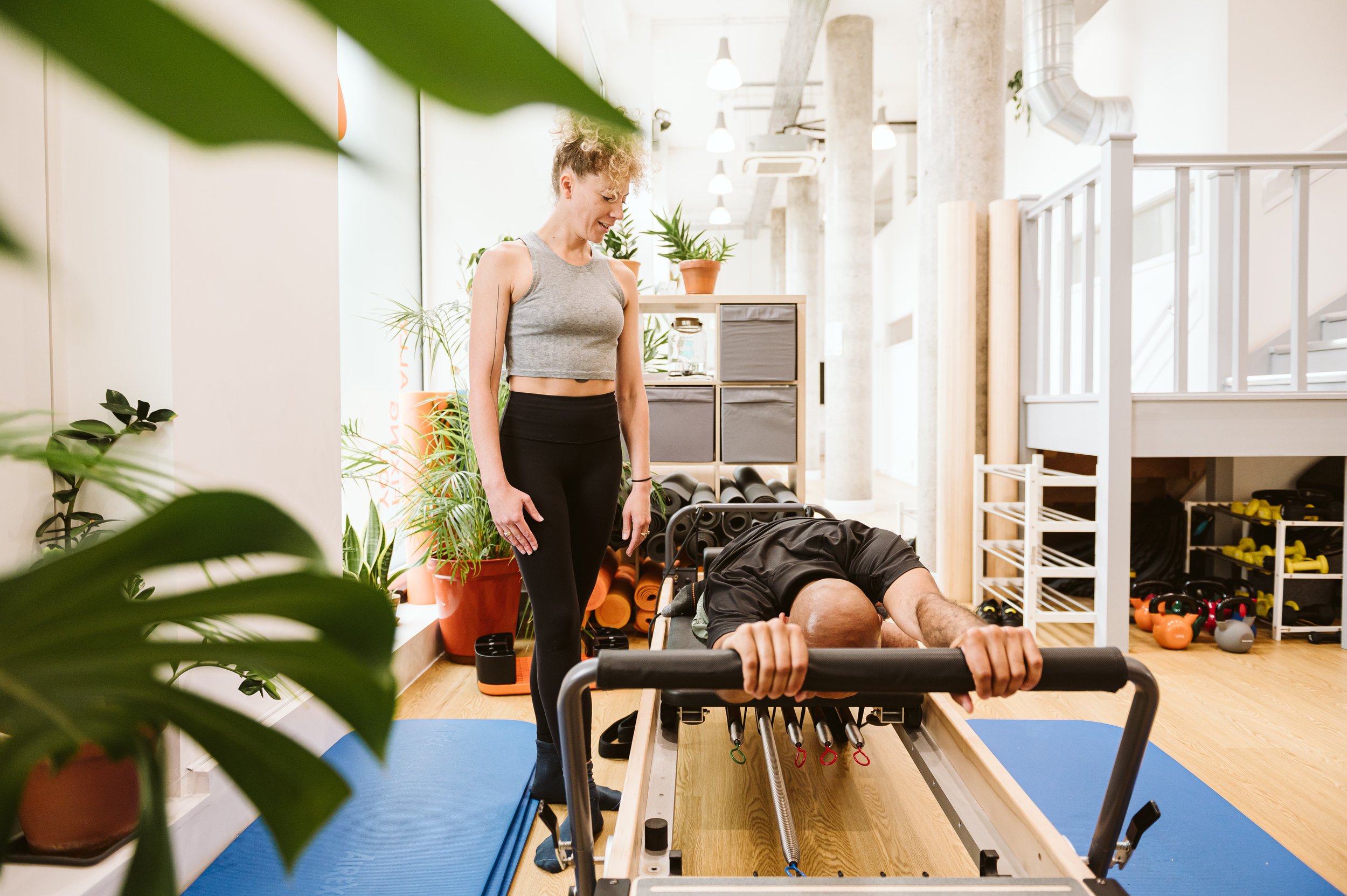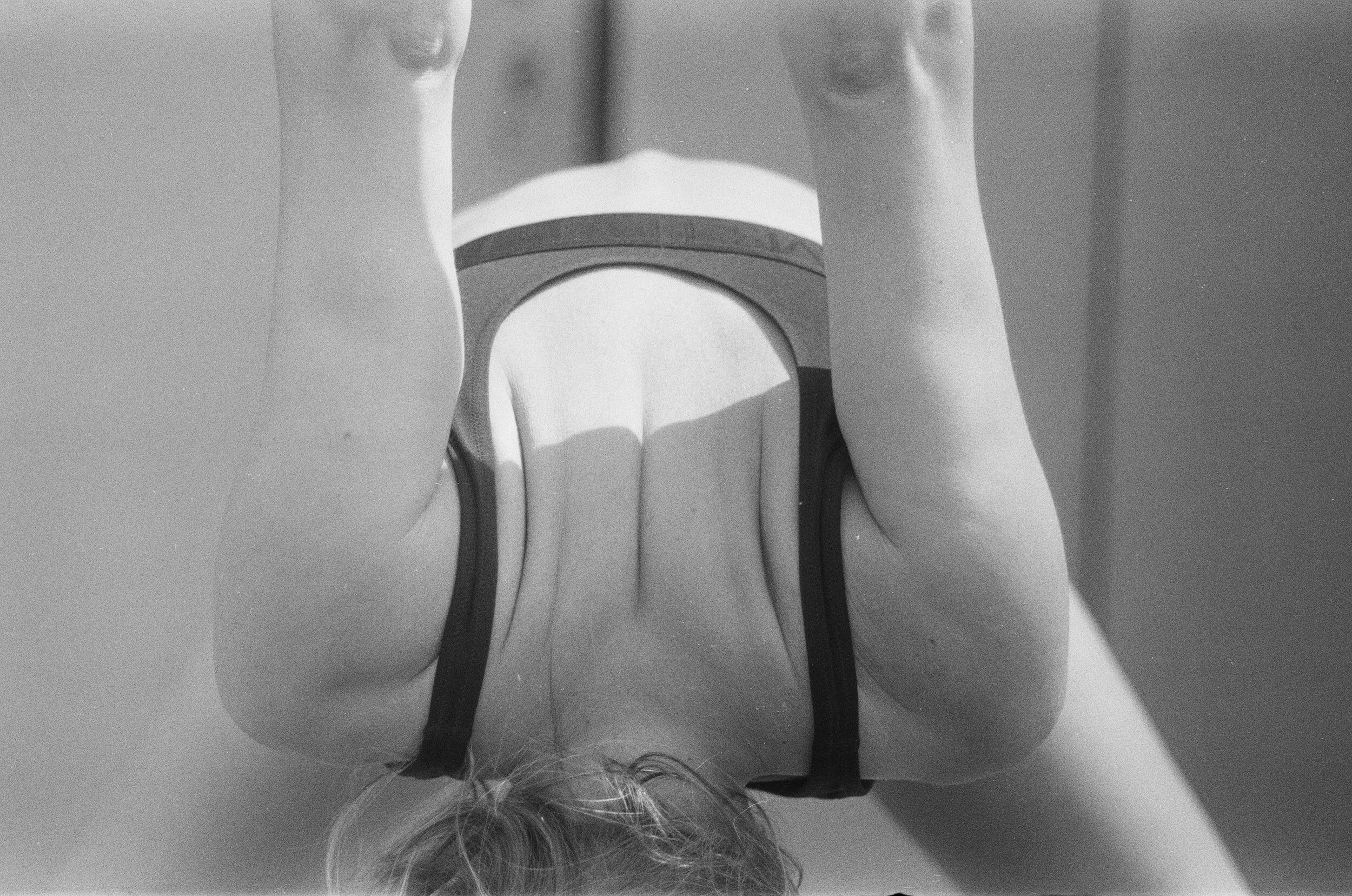PILATES EXPLAINED: A COMPREHENSIVE FAQ GUIDE BY PILATES INSTRUCTOR AMY MOFFAT
As a Pilates instructor, I often come across numerous questions from curious individuals who are eager to explore the world of Pilates and understand its benefits. Whether you’re a beginner or have some experience with this incredible form of exercise, I’ve compiled a list of frequently asked questions to provide you with the answers you seek. Let’s dive in!
Your Pilates Questions Answered (Summary)
- SHOULD I BE DOING 1-1 OR GROUP PILATES CLASSES?
- HOW OFTEN SHOULD I PRACTISE PILATES?
- WHAT IS REFORMER PILATES?
- WHAT KIND OF PILATES DO I TEACH?
- PILATES OR YOGA, WHAT’S THE DIFFERENCE AND WHICH IS BEST?
- WHAT SHOULD I WEAR TO PILATES CLASS?
Should I be doing 1-1 or group Pilates classes?
If you’re a newcomer to the Pilates method, a 1-1 session or series of around 3 to 10 1-1 sessions, depending on your current health, is a great place to start. Here you’ll learn the foundations and develop body-awareness while getting guidance on technique specific to your body, and your needs.
If you’re coming to Pilates from an injury, or pre or post-operation, a 1-1 is really beneficial, you’ll enjoy the attention to detail, nuance and guidance provided in the 1-1 environment, helping you make gains at a faster pace than in a group environment where 1-1 attention is limited.
If you’re a reasonably confident mover, and not suffering with an injury, a group class could be for you. For those who may do other sports or yoga, but you’re new to Pilates, it’s still worth joining a beginner’s class, rather than intermediate or advanced, so that you can get to grips with the important foundation elements.
How often should I practise Pilates?
The quickest results will be seen if you can attend 2-3 sessions a week, but life has its limitations and any time is better than no time. With a once or twice a week 1-1 session you can start to feel improvements relatively quickly, especially as you’ll be given a home exercise programme of two or three exercises to do between sessions, which can help you maintain and accelerate progress.
You can use a lot of what you learn in a 1-1 class and take it into your group class scenario, meaning a single 1-1 per week, plus one or two group classes per week, can provide progress at a good rate.
Pilates is also a great method to utilise alongside other sports and activities, for example if you’re a keen runner, a football player, a tennis player or gym bunny, Pilates sessions will help you get more from your other sports, while also helping to prevent injury. There’s a great range of exercises in Pilates that build core stability for gym-based workouts, mobility and flexibility exercises for rotational sports development, such as tennis and golf, and plenty of strengthening and stabilising exercises to protect the joints and help them become more adapt to the multiple planes of movement required in football and rugby, for example.
What is reformer Pilates?
A Reformer is a piece of Pilates equipment designed by Joseph Pilates. It consists of a carriage in a rectangular platform, and this carriage connects to springs, and pulleys and ropes are attached to the frame of the reformer.
The Pilates Reformer is a great tool because it offers assistance and feedback when we need it, for example if we’re developing our balance. It also offers resistance when we need it, for example if we’re looking to strengthen certain areas and challenge our body to develop stability.
The Reformer is a great place for a safe and effective full-body workout using a wide range of exercises.

What kind of Pilates do I teach?
I trained with the incredible world-renowned Polestar Pilates in both mat and equipment Pilates. Equipment Pilates covers use of the reformer, and also the ‘cadillac’ (sometimes called a ‘trapeze table’ or ‘tower’), the ‘wunda chair’, ‘ladder barrel’ and ‘spine corrector’.
In a 1-1 session I tend to utilise a wide range of equipment depending on the needs and level of the individual. They’re really fun pieces of equipment that can support us through movement and assist us to places of greater strength and stability, mobility and flexibility. In a mat 1-1 session I’m open to using some of the equipment if I feel it’s going to help you reach your goals and inform how you get the most out of some of the mat exercises.
Pilates or yoga, what’s the difference and which is best?
Pilates and yoga share a lot of similarities, both are mind and body practices, both emphasise the importance of breath during exercises, both are low impact exercises that can be done with minimal equipment, both can improve mobility, flexibility and strength, and there are cross-over exercises that are very similar, just with different names.

Yoga originated in India over 5,000 years ago, it is recognised as an ancient spiritual practice that uses the body to connect with the mind and spirit, building strength and awareness physically and mentally. There’s a focus on chakras, the seven energy points within your body, which yoga exercises help to stimulate and balance.
Compared to yoga, Pilates is relatively new. During world war one, as a German living in England, Joseph Pilates was interned on the Isle of Man with other German nationals. It was here where he developed his physical fitness methods to keep fellow prisoners of war active and healthy after noticing a deterioration in their physical and mental wellbeing in camp. Pulling on his personal history of illness as a child, a career in boxing and circus performing in his twenties, and his observations of how the local stray cats stayed dynamic and athletic with their daily stretches in the camp, he assisted his fellow Germans towards fitness.
In the 1920s, Joseph emigrated to the USA and opened a ‘Contrology’ gym next door to New York ballet, teaching his methods, while here his exercise system expanded and developed to help the injured dancers coming by his studio for assistance and the Hollywood stars looking to tone and shape their bodies. Contrology later became known as Pilates.
Pilates began as a method to rejuvenate any level of mover, and has developed into an exercise method to rehabilitate advanced athletes and dancers too. The beauty of the equipment Pilates designed is that anyone can benefit from the method, whether lacking in body-awareness and movement experience, or competing as a professional athlete, Pilates has lots to offer.
Like yoga, there is a focus on how breath can facilitate movement and control in the body, and like yoga it is a mindful movement practice. The benefits of the Pilates method is that the exercises are designed to correct imbalances, improve strength and stability, and develop mobility and flexibility. The system offers connection to and within our bodies, increasing spatial awareness.

If you have an injury, Pilates might be a better choice because of the supportive equipment. If you’re keen to develop your core stability I’d recommend Pilates because there’s a great array of exercises that can help to achieve this goal in a multitude of ways. If you have a specific goal in mind, for example running without pain, eradicating back pain when you’re sitting at the desk all day, or getting back to physical health after an operation, then my advice is to go for Pilates.
If you’re more inclined to develop your physical and spiritual connection, while developing flexibility and keeping mobile, you might find yoga more appropriate.
There is something for everyone in both practices, so it’s great to try both and see which you prefer. It also doesn’t have to be Pilates OR yoga, you might find you want to incorporate both into your training.
What should I wear to Pilates class?
Wear something that you feel is really easy to move around in. It’s helpful if the clothing is reasonably close fitting in order to watch how the body is moving, but the most important thing is for each individual to feel completely comfortable. Exercises are done either in bare feet or socks, and if you like to wear socks then the one with grips on the sole can be useful but not essential.
Next steps…
Remember, Pilates is a journey, and it takes time to build strength and improve your skills. Be patient with yourself and enjoy the process. With consistent practice and guidance from a qualified instructor, you’ll reap the many benefits that Pilates has to offer. At Fix we provide a range of Pilates options including 1:1 Pilates sessions using all the Pilates apparatus.
So go ahead, take the next step, and embark on your Pilates adventure. Your body and mind will thank you for it!
Pilates Instructor
